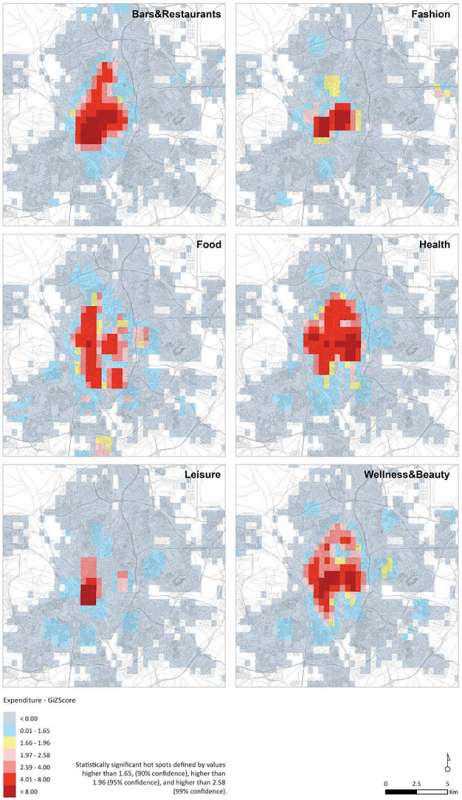Nuevo artículo: Towards a new urban geography of expenditure: Using bank card transactions data to analyze multi-sector spatiotemporal distributions
José Carpio Pinedo, Gustavo Romanillos, Juan Carlos García Palomares y Javier Gutiérrez, integrantes del equipo de TGIS firman este artículo de la revista Cities
1 sep 2022 - 15:29 CET
Disponible en: https://doi.org/10.1016/j.
Abstract
The spatial distribution of commercial activities is vital to support healthy lifestyles and to achieve livable public spaces and environmental, social and economic sustainability in our cities. However, commercial activities require a constant flow of expenditure for their own viability. As a result, understanding the spatial and temporal distribution of expenditure is fundamental, although the lack of detailed, complete data sources has impeded this task until now.
Bank card data paves the way for a new urban geography of expenditure, thanks to its fine spatial and temporal granularity along with the uniform coverage of all commercial sectors. In this paper, we analyze temporal, spatial, and spatiotemporal distributions of expenditure at the intraurban scale of the city of Madrid (Spain), combining spatial statistical tools (Getis-Ord General for global autocorrelation and Getis-Ord Gi* hot spot analysis for local autocorrelation) with k-means cluster analysis and spatiotemporal tools (Time Series Clustering analysis and Temporal Hot Spot Analysis).
Our analysis confirms the strong center-periphery gradient described in previous literature, but with a CBD integrated by distinct specialized areas. The paper demonstrates that bank card data has a great potential to support a new geography of expenditure that could strengthen decision-making in planning and retailing.

